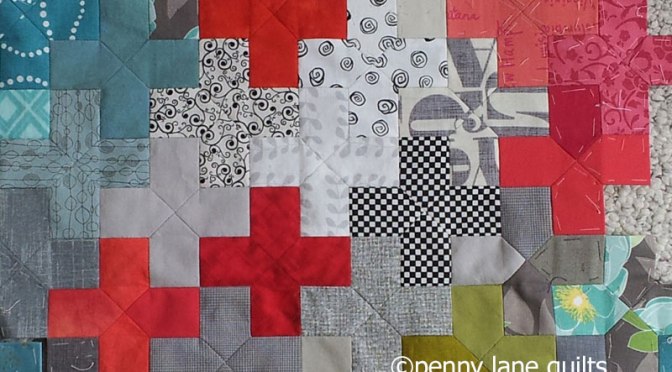Last night, while watching a wonderful MQG webinar featuring Anna Boenish, I was reminded of the many benefits of English paper piecing.

First of all, it’s portable. I keep my kit ready to go and it’s the project that I throw in my bag when I know I’ll have spare moments waiting for an appointment, riding a ferry, watching a ball game or being a passenger on a road trip.

Secondly, because you only need a few materials and hardly any space, it’s ideal for stitching in any location. Indoors or outdoors, you can literally use this technique anywhere!

Another great benefit is that EPP, like other handwork, lets you be social and visit with friends and family while still making headway on your project.
EPP is also a slow process. Now this could be seen as a benefit or a drawback, but in my opinion, slowing down is often a good thing.
If you have a design that requires precise or intricate work, EPP is definitely a way to accomplish this. It is also well suited to fussy cutting.

I had never really thought about it until I listened to Anna’s talk, but another thing that appeals to me is that you can begin without a plan. In fact, some of my traditional quilts were actually improvisational using this technique.

I often make units and just keep putting them together until they morph into something.

That’s how my current project is evolving. The template pieces for my epp plus quilt were created by Mollie Johanson and she provides a free template and tutorial on her blog Wild Olive. Check out #eppplus on Instagram for photos of folks using this pattern. You might even see pics of me basting in the truck while heading over Snoqualmie Pass.

If you are interested in learning how to English paper piece, just do a search of the topic. There are great resources and tutorials available.
And, if you’re a MQG member, but missed Anna’s webinar, log into the Community section of their website. Under the Resources tab, you’ll find a list of all the past webinars available. Just one of the perks of being a member! You can also find her work, and the unique ways she uses English paper piecing on her website Quilting Queerly or follow her on Instagram @quiltingqueerly.

